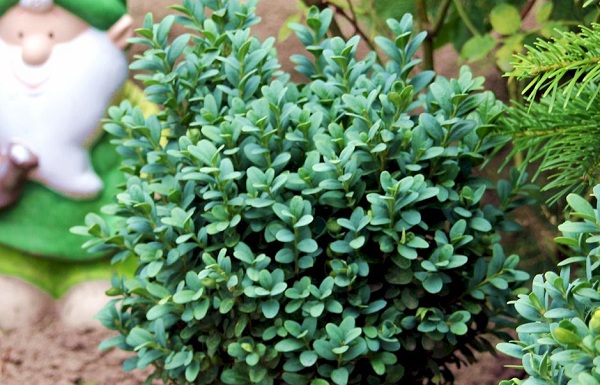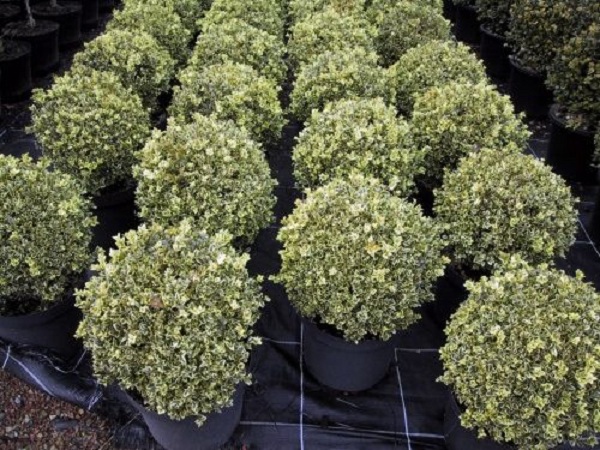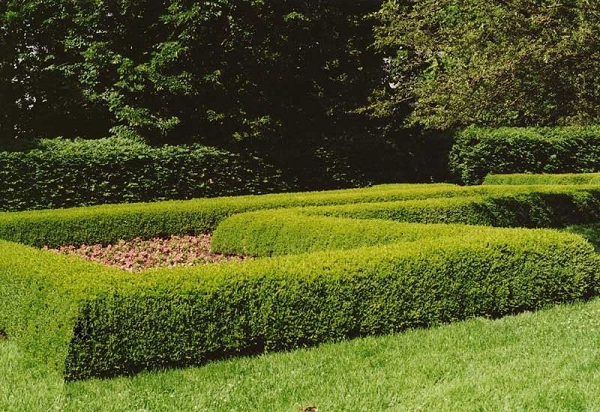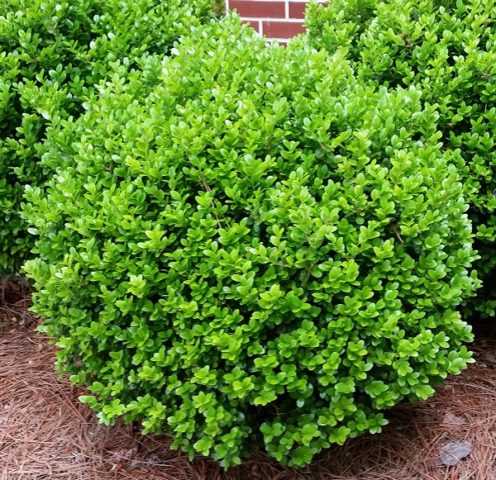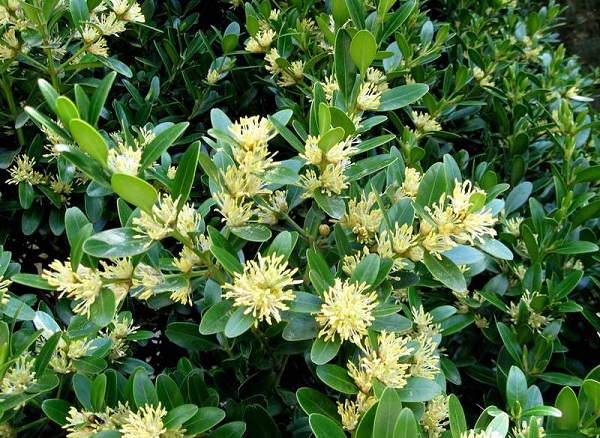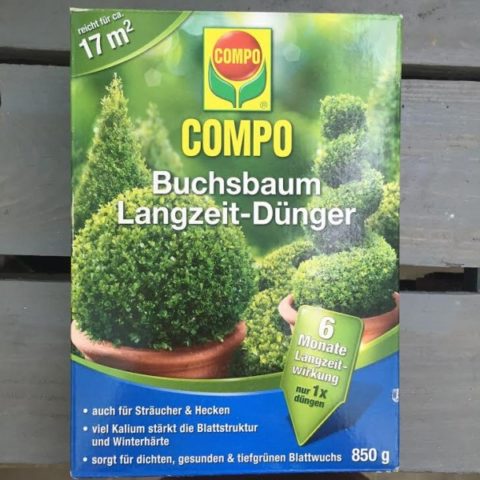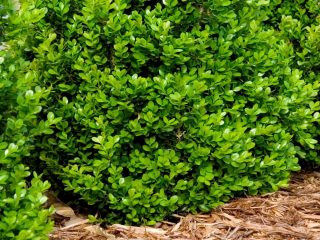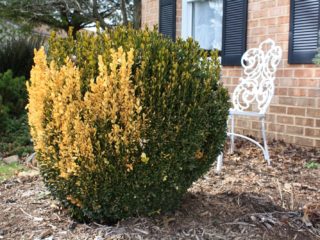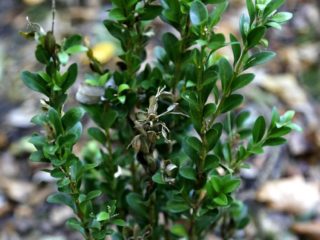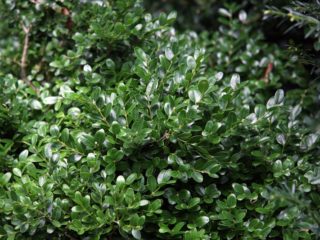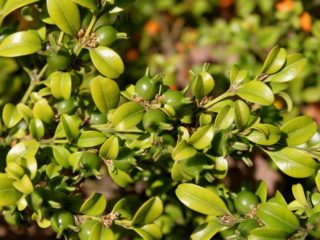Content
Boxwood is found quite often in Siberia only because it is one of the few specially bred varieties of ornamental trees from the Boxwood family. The evergreen shrub is popular in central Siberia. Buxus is chosen for its unpretentiousness to growing conditions and rapid adaptation to climate change. At any age, boxwood emphasizes the aesthetics and style of the garden, because it remains healthy and rarely gets sick throughout its entire life period.
Features of growing boxwood in Siberia and the Urals
Siberia and the Urals are considered the frostiest regions of Russia, but they are quite fertile and suitable for growing ornamental shrubs. The main feature when growing boxwood is the provision of high-quality care for the plant during the growing season. It is also not recommended to be late with sanitary pruning. Features when growing boxwood in Siberia that are worth paying attention to:
- Landing place.This should be the southern part of the garden, fenced with stones or trees.
- After snowfalls, you need to shake off layers of snow so that the bushes retain the structure of the branches.
- In the spring season, it is advisable to cover young boxwood with a cloth, so the foliage of the plant will not turn yellow.
- When planting, make a thick layer of drainage so that the root system does not rot from excess moisture.
Siberia is characterized by a sharp change in climate, so the specifics of planting and care must be observed. With proper care, the owner can grow branched and beautiful boxwood that will harmoniously fit into the garden landscape.
The best varieties of boxwood for Siberia and the Urals
Since the appearance of the bush, domestic breeders have tried to develop varieties of shrubs that will be resistant to sudden changes in temperature and planting location. The best varieties received unique names and quickly spread throughout the cold regions of the country.
Blauer Heinz
Frost-resistant boxwood variety. Grows up to 20-30 cm in height. It is actively used to create a landscape pattern in spacious flower beds. The plant has green-blue foliage and a leathery surface on the leaf blades.
Elegance
An evergreen shrub with variegated leaves. Globular boxwood, grows up to 1 m in height, up to 75 cm in diameter. Suitable for growing at home and planting in pairs in front of the garden entrance.
Faulkner
Siberian shrub with a slow growing season. Grows up to 1-1.2 m in height. The compact crown independently takes on the shape of a ball. After 3-4 years of cultivation, corrective pruning is required. Tolerates frosts down to -45 °C.
Winter Jam
Frost-resistant boxwood variety. It grows up to 1-1.5 m. The crown needs frequent pruning to give the required shape.Greens become vibrant in good light. In Siberia, for the winter, bushes are protected from snow with a covered frame.
Balearic
The most common type of decorative axle. It differs from its relatives in its rapid growth and high resistance to frost and drafts. The crown with large foliage tolerates off-season pruning well. The greenery of young bushes does not fade in the sun.
Planting and caring for boxwood in the Urals and Siberia
Cultivated varieties of evergreen boxwood in Siberia are suitable for cultivation in the Central and Southern regions of the country. Young seedlings need to be looked after for several months and comfortable conditions for plant rooting must be organized. Well-adapted bushes begin to develop on their own; they only need to be trimmed and covered for the winter.
Landing dates
In Siberia, young boxwood is planted in early autumn or mid-October, since the ornamental shrub blooms in spring. Transplanting domestic or wild buxus can be done in any season of the year from early spring to mid-autumn. Purchased boxwood in Siberia can be planted in open ground from mid-March to the end of April, so the boxwood will quickly take root. When planting at home, boxwood cuttings or seeds are planted in summer or autumn a month before the first frost.
Preparing the landing site and soil
The planting site must be in the shade or have a fence that will protect the seedlings from drafts. It is not recommended to plant boxwood in a sunny area; the plant may not take root or you will often have to replant young bushes instead of dried ones. For regions of Siberia, the optimal place for planting is a slope or flower bed with a high border, the south side of the garden.Also, preference should be given to an area with partial shade, where diffused natural light will promote the development of shrubs.
In Siberia, boxwood can take root on soil of any quality, but roots quickly develop on loam, black soil, and clay soil. Groundwater is allowed at a level of 3-4 m from the depth of the planting hole. Otherwise, the roots will rot from excess moisture, and boxwood bushes will be subject to frequent diseases. The soil is dug up several times until it becomes loose. The day before planting, dig a hole: 60 cm deep and 50 cm in diameter. Part of the soil is mixed with complex fertilizer, the area and the pit are treated with a highly concentrated solution of manganese to disinfect the soil.
Landing rules
Purchased boxwood seedlings in peat pots can be planted directly into the ground, having first moistened the soil well. If the relic was originally grown at home, then when replanting you need to carefully remove the plant so that the fragile roots are not seriously damaged. In warm regions of Siberia, buxus is planted together with primary soil in a prepared hole, sprinkled with a substrate of peat, compost and humus. The photo shows the process of planting and caring for boxwood in Siberia:
Make a watering circle around the bush and compact the soil at the roots. If there is no barrier, a support is placed on the windy side and the seedling is tied up. If the soil is moist, then watering is not required in the next week. A sign that the boxwood has taken root is that there are no dried branches, the greenery does not fade during the week of acclimatization.
Watering and fertilizing
In the Urals or Siberia, planting in the spring should be done before the beginning of the growing season. During this time, the plant will get used to the new climate and soil and will be able to develop independently. Young boxwood is watered 2 times a week with 3-4 liters. In the first month, the quality of the top layer of soil is monitored. White coating indicates excess moisture or lack of oxygen to the roots. After a year of cultivation, the frequency of watering is reduced to 1-3 times a month. During the rainy season, there is no need to water the boxwood; if there is acid rain, the bush needs a shower from a watering can. One adult Siberian boxwood bush requires up to 10 liters of water.
In the first year, fertilizing is not required if the roots are covered with substrate during planting. After the frosts have subsided, the root circle is loosened and the soil is fertilized with regular compost. The next fertilizing is applied in the summer, then in the fall and before the first frost, the soil is fertilized with superphosphates. Potassium supplements are added in small quantities simultaneously with watering. Nitrogen or sulfur is added as a last resort, at the time of illness.
Trimming
Spring pruning is done as necessary if, after removing the covers for the winter, dry, infected or damaged branches are found. Formation of the crown by pruning is used in the 2nd year of growing boxwood. Depending on the selected variety, 3-4 formative prunings are carried out per season. To give it an unusual shape, the shrub is grown in a special mesh pattern, along the contour of which the adult plant is trimmed.
Sanitary pruning is necessary to prepare the plant for the winter. Using garden shears, trim the crown layer to the base of living branches. Each section is disinfected with a weak solution of manganese. Autumn pruning is sometimes not necessary, but it can be used to even out the shape of the crown.
Protection from diseases and pests
Boxwood is a poisonous plant to most pests, but the relic is not resistant to fungal diseases and some parasitic insects. The gall midge fly destroys the trunk of the bush: the greenery withers or dries out, and the root system is affected. In Siberia, infected boxwood quickly dies, and only healthy plants can be saved or protected in advance from the pest by spraying. The solution requires 10 mg of insecticides per 10 liters of water. The bush is sprayed within a week after removing the covers and before preparing for winter.
The mealyworm infects several bushes at once, which become covered with a white coating. You can get rid of the parasite at an early stage of the infection. Boxwood is sprayed with a diluted solution of water and sulfur, sometimes complex chemicals are used. In case of shoot necrosis, the infected branches are removed to the living area. Cancer of the root system spreads quickly, so a quickly wilting plant indicates a similar disease. The bushes are dug up and burned, and the place where the boxwood grew is disinfected.
How to cover boxwood for the winter in the Urals and Siberia
Despite its good adaptation to a changeable climate, boxwood for Siberia or the Urals is considered too heat-loving a plant that needs to be covered for the winter. Thick fabric, burlap, and cardboard boxes are used for covering. In Siberia and the Urals, in the first ten days of October, the trunk of the relic is whitened with lime and copper sulfate, which will protect the trunk and roots from earthen pests.
After sanitary pruning, the bushes are wrapped with fabric or other material, and the structure is additionally secured with rope. The base of the boxwood is mulched with hay, spruce branches or roofing material.Such procedures allow you to tolerate low temperatures down to - 30-50 ° C, which is typical for Siberia. Covers are removed after the frost has completely subsided so that the branches are not blocked.
Boxwood propagation
The shrub can be propagated on its own by cuttings or seeds. Dividing the bush is rarely used, because the plant may not take root due to injured roots. Cuttings are prepared in early spring; after removing the coverings, strong young shoots are selected at the roots of the bush. Healthy cuttings are suitable for planting at a height of 10-15 cm. The foliage is removed to half the length of the shoot.
The cut of the shoot should be oblique. The fresh end of the cutting is dipped into a solution of growth stimulants for 24 hours, then planted. After a month, the roots sprout, then the root system of the young boxwood begins to develop. Seeds are rarely used for planting because it is difficult to find quality material. For test planting, pour a handful of seeds into the hole. In the best case, up to 50% of the planting material will germinate on Siberian soil.
Conclusion
Boxwood in Siberia and the Urals takes root well and grows to lush sizes. Thanks to its quick adaptation to comfortable conditions, the bush does not get sick and easily tolerates cutting to the desired shape and sanitary pruning. With its presence, the garden plot takes on a modern look; boxwood combines harmoniously with colorful or plain plants.

